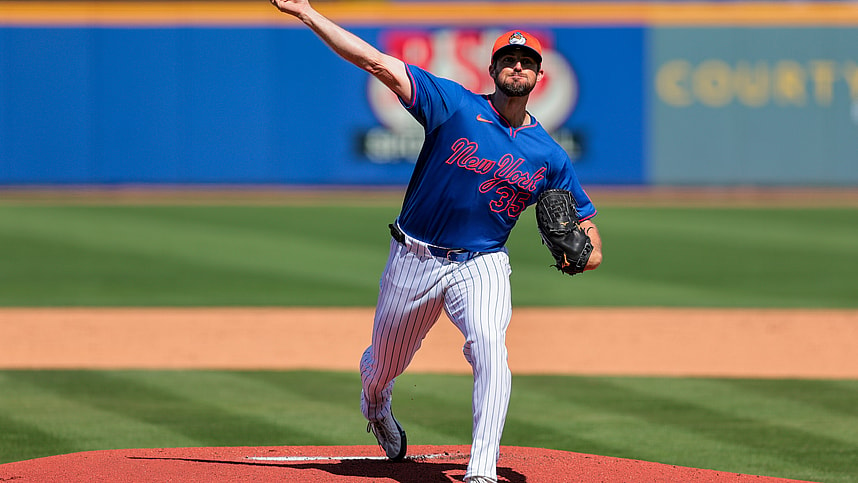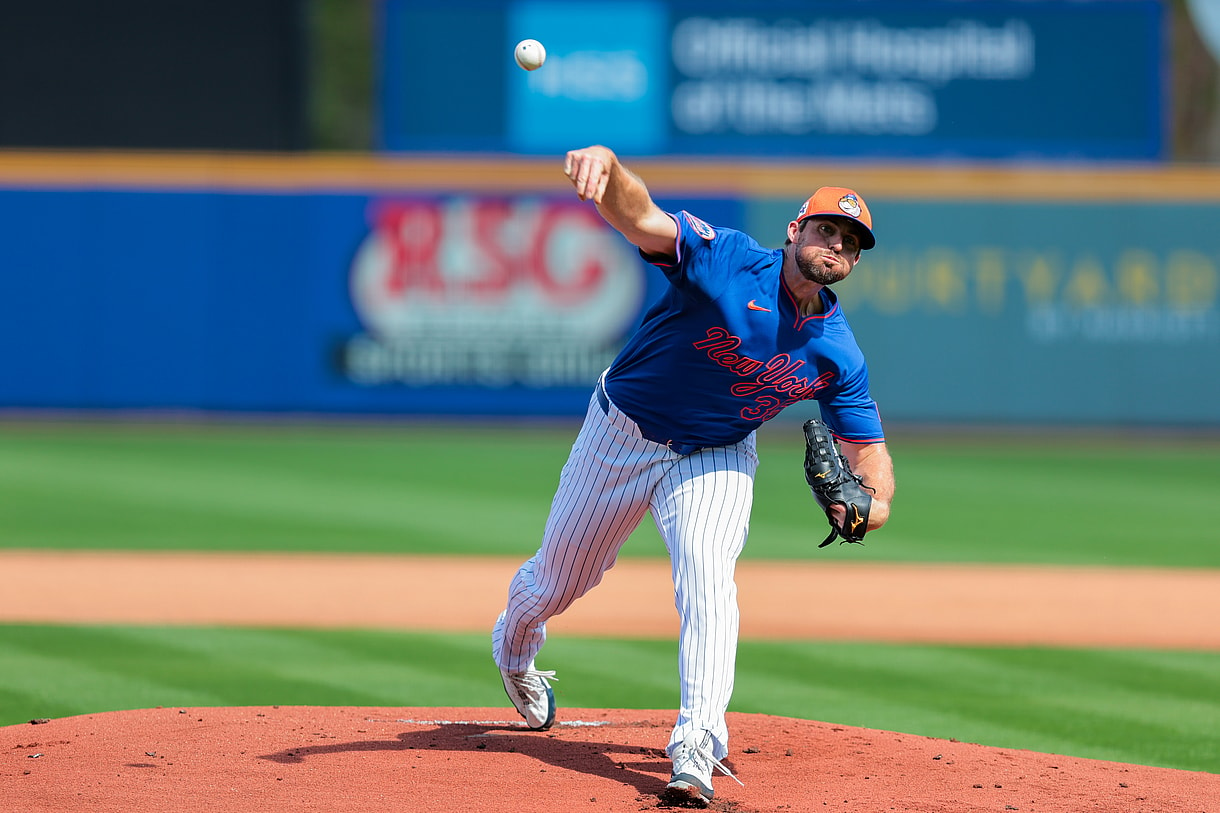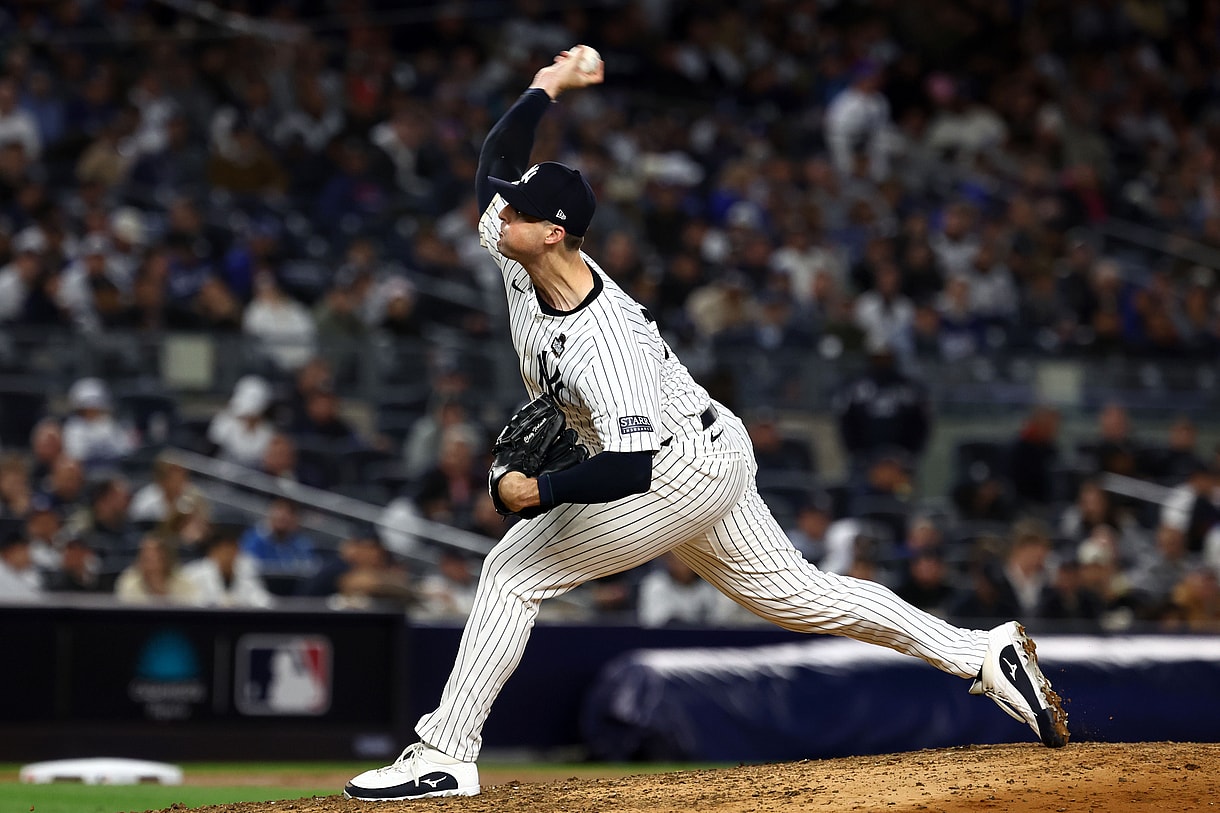
The Mets are rolling the dice on Clay Holmes this season, shifting him from the bullpen to the starting rotation in hopes that his elite ground-ball tendencies can translate over longer outings. It’s a bold move, but as spring training ramps up, Holmes appears to be on track to handle the challenge.
Given the setback with Frankie Montas, the Mets need as much rotation stability as possible, and Holmes is progressing toward becoming a key piece of the puzzle.
“I feel like I’m in a great spot right now, in a good position to really get the experience and be able to stretch out,” Holmes said Wednesday.

A Major Adjustment for Holmes
For the past few years, Holmes has been one of the most reliable closers in baseball, locking down games with his heavy sinker and wipeout slider.
Last season, he posted a 3.14 ERA over 63 innings with 30 saves for the Yankees, proving he could handle high-leverage situations. But throwing 60 innings in one-inning bursts is a different animal from tossing 150-plus as a starter. Holmes hasn’t thrown more than 63.2 innings in any of the past three seasons, and he’s never cracked 70 in a single year.
That’s why the Mets are easing him into this transition, making sure he doesn’t have to go from zero to 100 too quickly.
“It kind of eases some of that in your mind—you don’t have to add on a ton each [start],” Holmes said. “You don’t feel like you have two starts left and you have to [increase] by 30 or 40 pitches.”

Can His Arsenal Hold Up?
Holmes has a solid pitch mix, but there’s a reason he’s spent most of his career in the bullpen. His bread and butter is his sinker, which he throws more than half the time (56.3% last season). It’s a high-velocity pitch, averaging 96.6 mph with plenty of movement, and it generates a ton of ground balls.
That’s great for a reliever who only has to face a lineup once. The problem? When hitters get a second or third look at him, they start timing it up. Last season, opposing batters hit .317 against his sinker with a .424 slugging percentage, which isn’t ideal for a pitch he leans on so heavily.
His slider and sweeper help balance things out, with the gyro slider working vertically and the sweeper dragging horizontally. It’s enough to get by, but without a true third or fourth pitch to mix in, Holmes may run into trouble as games go deeper.
- New Mets infielder had some training at first base in 2025: Is he Pete Alonso’s replacement?
- The Mets could make a sneaky move for Bo Bichette in free agency
- Report: Mets actively looking for more support at 2 positions
The Mets Like Where Holmes Is At
Despite those concerns, Holmes has looked further along in his development than expected in the early days of camp. He’s building up stamina, and the Mets seem comfortable with the idea of him opening the year as a starter. They’re betting that his ability to induce weak contact will outweigh the lack of strikeout stuff, and if he can manage his innings properly, he might just pull it off.
More about: New York Mets